Faculty
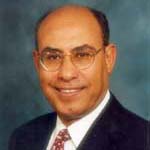 Mohamed Abdou
Mohamed Abdou
Mechanical and Aerospace Engineering
Email
Website
Professor Abdou's research focuses on fusion engineering with special emphasis on Fusion Nuclear Technology (FNT). This involves theory, modeling, experiments, design, and analysis, and includes both basic and applied research. The focus of the basic research has been on uncovering, understanding, and modeling of basic phenomena related to the responses of solids and fluids to the fusion environment. The applied research has aimed to: a) develop predictive capability, b) identify engineering scaling laws for fusion testing facilities, and c) conceptualize and develop innovative designs for FNT components, and fusion reactors.
 Chris Anderson
Chris Anderson
Mathematics
Email
Website
Professor Anderson's research is focussed on numerical analysis and scientific computing with an emphasis on the development and synthesis of simulations for ODE and PDE based models of physical systems. Professor Anderson is also the current director of UCLA's Program in Computing (PIC).
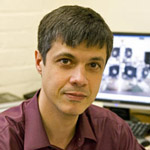 Vasilis Angelopoulos
Vasilis Angelopoulos
Earth, Planetary, and Space Sciences
Email
Website
Professor Angelopoulos's current research focuses on electromagnetic phenomena in the near-Earth environment. Specifically, he and his team investigate how particles are accelerated in Earth's magnetosphere and radiation belts, how the upper atmosphere and ionosphere respond to space currents, how and why plasma waves and giant pulsations form, and how the lunar environment i nteracts with the solar wind.
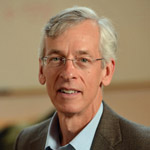 Russel Caflisch
Russel Caflisch
Institute for Pure and Applied Mathematics and Mathematics
Email
Website
Professor Caflisch is Director of the Institute for Pure and Applied Mathematics at UCLA. His research covers a wide range of topics in applied mathematics, including the development of multiscale methods for Coulomb collisions in plasma dynamics.
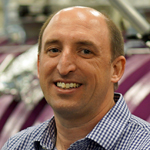 Troy Carter
Troy Carter
Physics & Astronomy
Email
Website
Professor Carter is the Director of the PSTI. His research involves experiments in laboratory plasmas and seeks to understand phenomena relevant to magnetic confinement fusion energy and to space and astrophysical plasmas. In particular this work focuses on nonlinear wave interactions, turbulence, and turbulence-induced transport in magnetized plasmas.
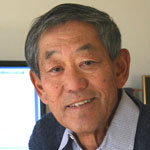 Francis F. Chen
Francis F. Chen
Electrical Engineering
Email
Website
Prof. Chen is a plasma physicist with a career extending over 61 years and encompassing both experiment and theory. He has devoted about a decade each to the subfields of magnetic fusion, laser fusion, plasma diagnostics, basic plasma physics, and low-temperature plasma physics. Most plasma students are familiar with his textbook Introduction to Plasma Physics and Controlled Fusion. His current interest is in radiofrequency plasma discharges, especially helicons, that can be used in manufacturing or plasma propulsion.
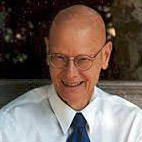 Ferdinand Coroniti
Ferdinand Coroniti
Physics & Astronomy
Email
Webpage
The research interests of Professor Coroniti are in the application of plasma physics and magnetohydrodynamics to astrophysical systems. Recent research areas include the structure of super-relativistic winds, which are emitted by a pulsar magnetosphere, and the interaction of the wind with the surrounding supernova remnant. Dr. Coroniti has had a long-term interest in the structure of accretion disks around supermassive black holes in active galactic nuclei. Moreover, he investigates the hydromagnetic structure of the magnetosphere, plasma convection dynamics, the process of magnetic reconnection, the excitation of plasma waves, and the physics of magnetospheric substorms.
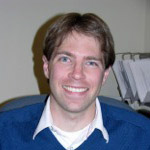 Steven Furlanetto
Steven Furlanetto
Physics & Astronomy
Email
Website
The research of Professor Furlanetto is generally focused on theoretical cosmology, and in particular on the eras of first structure and galaxy formation and the intergalactic medium (IGM), the very diffuse gas between galaxies.
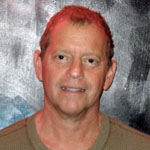 Walter Gekelman
Walter Gekelman
Physics & Astronomy
Email
Website
As principal investigator of the Basic Plasma Science Facility, Walter Gekelman envisions the facility as a place to perform frontier-level experiments that require physical conditions not suitable for small devices. The facility provides an environment in which teams with complementary expertise can come together to attack problems that they would not pursue individually. Research on the fundamental properties of plasmas aids our understanding of applications ranging from fusion energy to space science.
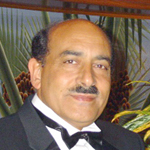 Nasr Ghoniem
Nasr Ghoniem
Mechanical and Aerospace Engineering
Email
Website
Distinguished professor Nasr Ghoniem's research goals include developing new-engineered materials by computational design for future energy sources in magnetic- and laser- based systems; designing materials at the nano- and micro-scale for applications in the nuclear, aerospace and microelectronics; utilizing plasmas as the fourth state of matter for experimental development of novel materials processing techniques. He is fellow of ANS, ASME, AAM, MRS, and JSPS.
 Brad Hansen
Brad Hansen
Physics & Astronomy
Email
Website
On the observational side, along with former student Ian Crossfield, and long-time collaborator Travis Barman, Professor Hansen has pursued a program over the last several years to observe transmission spectra of extrasolar giant planets. These observations offer the promise of constraining the chemical compositions of planetary atmospheres, and the techniques they develop will hopefully prove useful one day in performing similar measurements on lower mass, earth-class planets.
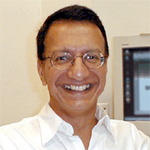 Chan Joshi
Chan Joshi
Electrical Engineering
Email
Website
Dr. Chan Joshi is a Distinguished Professor of Electrical Engineering and Director of the Neptune Facility for Advanced Accelerator Research at UCLA. His research interests are in the areas of laser fusion, laser acceleration of particles, nonlinear optics of plasmas, high-power lasers and particle beams, and basic plasma phenomena.
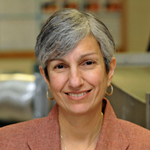 Ann Karagozian
Ann Karagozian
Mechanical and Aerospace Engineering
Email
Website
Professor Karagozian's research interests lie in experimental and computational fluid mechanics and combustion, with applications to improved engine performance, alternative fuels, and advanced rocket and air breathing propulsion systems. Recent studies have focused on fundamental plasma simulations relevant to spacecraft propulsion and plasma-assisted combustion systems.
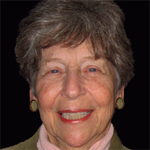 Margaret Kivelson
Margaret Kivelson
Earth, Planetary, and Space Sciences
Email
Website
Professor Kivelson's current space physics projects are linked to the space missions Cluster, Themis, and Cassini. Her principal scientific interests include the magnetospheric plasma physics of Earth, Jupiter, and Saturn (theory and data analysis), the interaction of flowing plasmas with planets and moons, and ultra-low frequency waves (theory, data collection, data analysis).
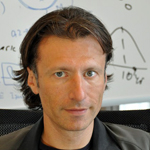 Alexander Kusenko
Alexander Kusenko
Physics & Astronomy
Email
Website
Professor Kusenko's research highlights include studies in theoretical elementary particle physics, astrophysics, and cosmology.
Neutrino physics and astrophysics offer an opportunity to study both the fundamental laws of nature and the workings of some of the most energetic objects in the universe.
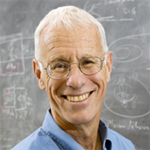 Lawrence Lyons
Lawrence Lyons
Oceanic and Atmospheric Sciences
Email
Website
Professor Lyons studies disturbances of the magnetosphere-ionosphere system using ground-based and space-based observations, theory, and modeling; solar-wind magnetospheric coupling; and magnetosphere-Ionosphere-thermosphere Coupling.
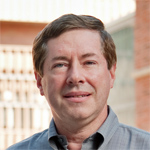 Matthew Malkan
Matthew Malkan
Physics & Astronomy
Email
Website
Professor Malkan's research focuses on the two primary sources of energy in the Universe since the Big Bang: fusion power in stars and accretion power from massive black holes. While there is still considerable uncertainty in the energy production in the current Universe, the ultimate goal is to trace the cosmic history of these power sources all the way back to their beginnings.
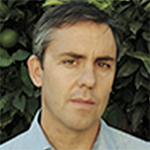 Jaime Marian
Jaime Marian
Materials Science and Engineering
Email
Website
Prof. Marian's group's specific areas of interest include microstructural evolution and mechanical property degradation in fusion materials, simulations of plastic deformation in alloys, simulations of thermodynamics and phase transformations in functional materials, strength in nanostructured crystals, and simulations of irradiation damage in a variety of situations. The overarching goal of their work is to influence materials synthesis and design by understanding their internal evolution under prescribed conditions.
 Robert L. McPherron
Robert L. McPherron
Earth, Planetary, and Space Sciences
Email
Website
Professor McPherron's primary research interest is geomagnetism with particular emphasis on the causes of geomagnetic variability including magnetospheric substorms, magnetic storms, and ultra low frequency waves. He has worked with several government agencies applying knowledge of magnetic activity to alleviate its effects on human systems. He is also active in the field of exploration geophysics with particular emphasis on magnetic exploration and geophysical database management.
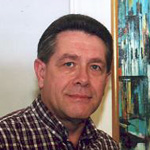 George Morales
George Morales
Website
Professor Malkan's research focuses on the two primary sources of energy in the Universe since the Big Bang: fusion power in stars and accretion power from massive black holes. The primary diagnostics of these processes he uses, out to very high redshifts (cosmic lookback times of >12 Gigayears), are line and continuum emission from partially to highly ionized gas.
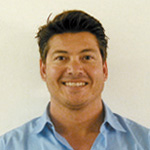 Warren Mori
Warren Mori
Physics & Astronomy
Email
Website
Professor Mori's group has made key contributions to the field of plasma-based acceleration and the use of particle-based numerical methods to study problems across plasma physics. Its research remains focused on the use of fully parallelized particle-in-cell simulations to study intense laser and beam plasma interactions, plasma-based acceleration, inertial confinement fusion including fast ignition, space plasmas, Alfvénic plasmas, and high-energy density science.
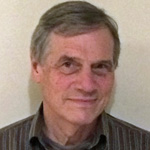 Mark Morris
Mark Morris
Physics & Astronomy
Email
Website
Much of Professor Morris' research is aimed at understanding the innermost regions of our Milky Way Galaxy. This relatively extreme environment is characterized by high densities of stars, gas and energy, strong magnetic fields, and a supermassive black hole. All of this gives rise to a variety of phenomena not evident elsewhere, including stellar collisions, large-scale shocks, powerful magnetohydrodynamic displays, and perhaps a jet from the black hole. Dr. Morris uses radio, infrared, and X-ray observatories to learn as much as possible about this complex region and to elucidate its unusual phenomenology, much of which is likely to be important for understanding active galactic nuclei and galactic evolution.
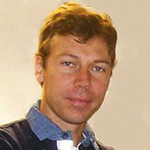 Pietro Musumeci
Pietro Musumeci
Physics & Astronomy
Email
Website
Professor Musumeci's primary research interests lie in applying the tremendous progress of the laser technology of the last decades to provide high quality, ultra-short particle beams from compact accelerators. Ranging from long term goals related to the use of such beams for high energy physics research to more immediate medical and basic science applications, the use of lasers in the acceleration, manipulation and diagnostics of particle beams is definitely destined to play an important role in the future of accelerators.
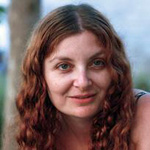
Smadar Naoz
Physics & Astronomy
Email
Website
Smadar Naoz is interested in a broad range of topics in theoretical astrophysics with an emphasis on dynamical research problems from high redshift structure formation to the dynamics of stars, black holes and extrasolar planets. During her PhD she studied the first generation of galaxies and 21cm fluctuations. She is also very interested in the formation of the first magnetic fields in the early Universe via plasma instabilities.
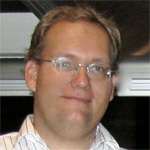 Christoph Niemann
Christoph Niemann
Physics & Astronomy
Email
Website
Professor Niemann's research deals with of laser-plasma interactions, including various aspects of laboratory astrophysics.
A recent focus has been on the creation of laser-driven collisionless shock waves in large magnetized plasmas, using a new high energy laser and the Basic Plasma Science Facility at UCLA.
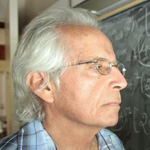 Stan Osher
Stan Osher
Mathematics
Email
Website
Stanley Osher has made fundamental contributions to applied mathematics, computational science and scientific computing and who has cofounded three companies based, in part, on his research. He has applied his pioneering work on level set methods and other numerical methods for partial differential equations to the field of image processing and, in particular, to video image enhancing and movie animation.
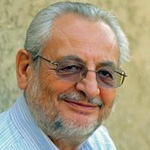 Claudio Pellegrini
Claudio Pellegrini
Physics & Astronomy
Email
Website
Claudio Pellegrini's area of research is electron and photon beams physics, coherent X-ray sources, particle accelerators and their applications, novel accelerators using lasers and plasmas.
Within this field he is particularly interested in collective effects, instabilities, and self-organization phenomena.
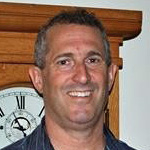 James Rosenzweig
James Rosenzweig
Physics & Astronomy
Email
Website
Professor Rosenzweig is world renowned as an expert in the physics of intense, ultra-fast charged particle beams and their interactions. These interaction scenarios include the beam self-interaction, classified as single component relativistic plasma physics, the beam-beam interaction in colliders, the beam-radiation interaction, e.g. the free-electron laser, coherent Cerenkov, transition and synchrotron radiation and the beam-plasma interaction manifested as extreme (TV/m) high field acceleration in plasma driven by charged particle or laser beams.
 Christopher Russell
Christopher Russell
Earth, Planetary, and Space Sciences
Email
Website
Professor Russell is the the principal investigator of the magnetometers on the four spacecraft Magnetospheric Multiscale mission in high altitude Earth orbit, the principal investigator of the ion propelled Dawn mission to Vesta and Ceres, a co-investigator on the magnetometer team on the Cassini mission to Saturn, and is involved in the ROMAP investigation on the Rosetta mission to comet Churyumov-Gerasimenko, the IMPACT investigation on the STEREO mission to study solar and solar wind disturbances, and the THEMIS mission to study substorms.
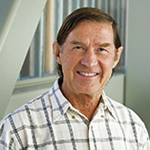 Reiner Stenzel
Reiner Stenzel
Physics & Astronomy
Email
Website
Prof. Stenzel's research interests lie in basic plasma physics. The experimental work involves the development of novel plasma sources, diagnostic tools, and data processing techniques. Much of the recent and ongoing research is focussed on the study of space plasma physics problems in scaled laboratory experiments. Topics include magnetic reconnection, free plasma expansion, beam-plasma interactions, whistler waves, transport of transient currents, modeling of electrodynamic tethers, nonlinear electron MHD physics, whistler modes with orbital angular momentum, fireballs and sheath physics, and antennas in plasmas.
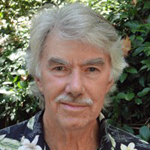 Richard Thorne
Richard Thorne
Oceanic and Atmospheric Sciences
Email
Website
Professor Thorne has made research contributions covering a wide range of topics in space plasma physics. He is a Fellow of the American Geophysical Union, a co-chair of the current GEM focus group on the Diffuse Aurora, a Co-I on the JUNO mission to Jupiter, and a Co-I and theory lead on the ECT and EMFISIS Teams for the NASA Radiation Belt Storm Probes mission. Most of his research involves the role of wave-particle interactions in collision-less space plasmas.
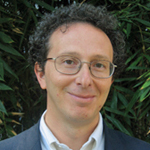 Marco Velli
Marco Velli
Earth, Planetary, and Space Sciences
Email
Website
Professor Velli's research is focused on space plasma physics and solar magnetic activity with particular emphasis on the stability of magnetic structures anchored in the photosphere such as coronal loops; wave propagation and shock formation in inhomogeneous and stratified plasmas; nonlinear evolution of current sheets and magnetic reconnection; the properties of turbulence in dynamically forced, open systems; and wave particle interactions in the solar corona and heliosphere.
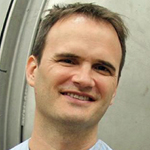 Richard Wirz
Richard Wirz
Mechanical and Aerospace Engineering
Email
Website
Richard Wirz is an Associate Professor in the Mechanical and Aerospace Engineering Department at UCLA and holds a joint appointment in JPL’s Electric Propulsion Group at JPL. He is the Director of the UCLA Plasma & Space Propulsion Laboratory and the UCLA Energy Innovation Laboratory. His plasma and space related research focuses on advance propulsion concepts and the plasma science relevant to these devices. His energy research currently focuses on new approaches to solar thermal energy storage and wind energy capture.
 Edward Wright
Edward Wright
Physics & Astronomy
Email
Website
Prof. Wright is interested in infrared astronomy and cosmology. He is the PI on the Wide-field Infrared Survey Explorer (WISE). He worked on the COsmic Background Explorer (COBE) starting in 1978, the Wilkinson Microwave Anisotropy Probe (WMAP) starting in 1994, and the Spitzer Space Telescope starting in 1976. In 1992 he received the NASA Exceptional Scientific Achievement Medal for his work on the COBE. He has received the Gruber Prize in Cosmology twice: in 2006 with the COBE team and in 2012 with the WMAP team.
